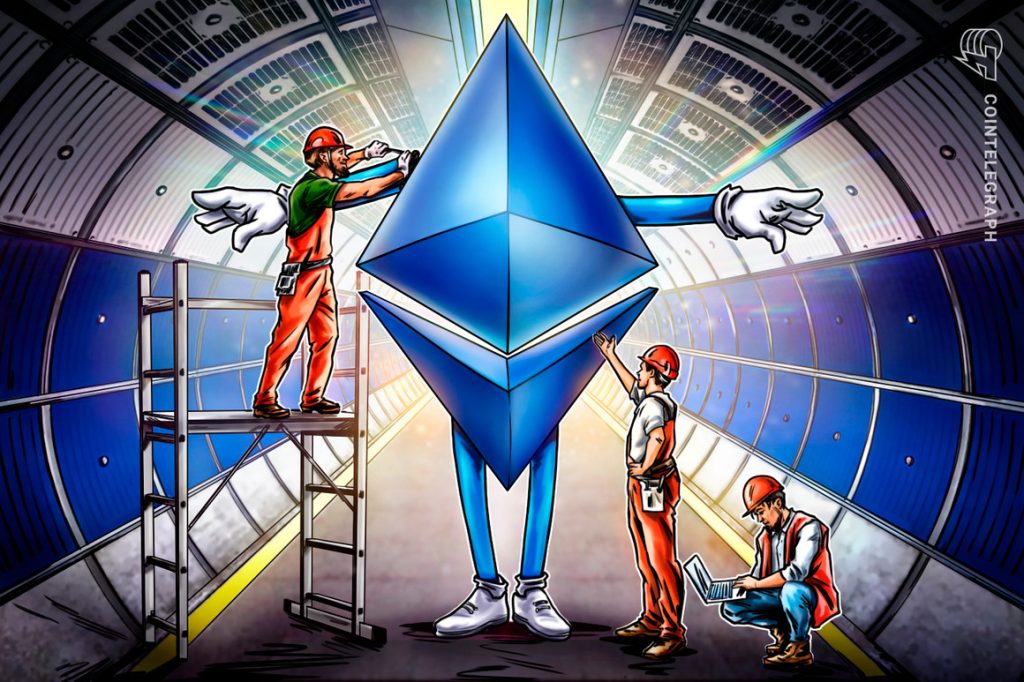The excitement around Ethereum’s (ETH) upcoming upgrade, The Merge, which involves the merger of two blockchains — Mainnet Ethereum and Beacon Chain — has unknowingly spurred rumors across the community.
Termed the most significant upgrade in the history of Ethereum, The Merge does indeed mark the end of proof-of-work (PoW) for the Ethereum blockchain. However, here are five misconceptions that stand out among the rest.
Misconception 1: Ethereum gas fees will reduce after The Merge
Ethereum’s impending upgrade will reduce Ethereum’s infamous gas fees (transaction fees) is one of the biggest misconceptions circulating among investors. While reduced gas fees tops every investor’s wishlist, The Merge is a change of consensus mechanism that will transition the Ethereum blockchain from PoW to proof-of-stake (PoS).
Instead, lowering gas fees in Ethereum will require working on expanding the network capacity and throughput. The developer community is currently working on a rollup-centric roadmap to make transactions cheaper.
Misconception 2: Ethereum transactions will be faster after The Merge
It is safe to assume that Ethereum transactions will not be noticeably faster. However, there is some truth to this rumor, as Beacon Chain allows validators to publish a block every 12 seconds, which on the Mainnet is roughly 13.3 seconds.
While Ethereum developers believe that transitioning to PoS will enable a 10% increase in block production, the slight improvement will go unnoticed by users.
Misconception 3: The Merge will result in downtime of the Ethereum blockchain
Contrasting the misconceptions that envision positive outcomes for Ethereum from The Merge, a popular rumor suggests that the planned upgrade will momentarily take down the Ethereum blockchain.
The developers anticipate no downtime as blocks transition from being built using PoW to being built using PoS.
Misconception 4: Investors will be able to withdraw staked ETH after The Merge
Staked ETH (stETH), a cryptocurrency backed 1:1 by ETH, currently lies locked on the Beacon Chain. While users would love to be able to withdraw their stETH holdings, the developer community has confirmed that the upgrade does not facilitate this change.
Withdrawal of stETH holdings will be made available during the next major upgrade after The Merge, known as the Shanghai upgrade. As a result, the assets will remain locked and illiquid for at least 6-12 months after the merger.
Misconception 5: Validators will not be able to withdraw ETH rewards til the Shanghai upgrade
While stETH remains blocked for investors until withdrawals are resumed following the Shangai upgrade, validators will have immediate access to the fee rewards and maximal extractable value (MEV) earned during block proposals from the execution layer or Ethereum Mainnet.
As the fee compensation will not be newly issued tokens, it will be available to the validator immediately.
Related: Ethereum will outpace Visa with zkEVM Rollups, says Polygon co-founder
Sharing his take on Ethereum’s untapped potential, Polygon co-founder Mihailo Bjelic told Cointelegraph that zkEVM Rollups, a new scaling solution for Ethereum, will allow the smart contract protocol to outpace Visa in terms of transaction throughput.
Sandeep Nailwal, Polygon’s other co-founder, echoed Bjelic’s thoughts as he envisioned the solution slicing down Ethereum fees by 90% and increasing transaction throughput to 40–50 transactions per second.






